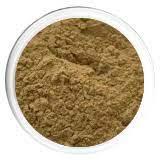Yeast Nucleotides Market – Comprehensive Analysis of Market Scope, Performance, and Competitive Positioning

The yeast nucleotides market is undergoing a significant transformation driven by its expanding role in animal nutrition, pet food, and biotechnology. A thorough market analysis reveals a complex yet promising landscape defined by competitive segmentation, evolving buyer needs, technological innovation, and regional market disparities. Understanding these variables is critical for stakeholders seeking to position themselves strategically in this growing but highly specialized industry.
The global yeast nucleotides market is moderately consolidated, with a mix of established biotechnology firms, feed additive manufacturers, and specialized ingredient suppliers. Players such as Angel Yeast Co., Ltd., CJ CheilJedang, and Lesaffre lead the field in nucleotide production, leveraging advanced fermentation technologies and integrated supply chains. These companies dominate through large-scale production capacity, proprietary strains, and strategic alliances with feed manufacturers.
The market’s performance varies significantly across application segments. Livestock feed, particularly for poultry and swine, represents the largest revenue contributor. This is attributed to rising global meat consumption and the increasing adoption of antibiotic-free production systems, particularly in North America and Europe. Pet food is the second-fastest-growing segment, driven by rising global pet ownership, premiumization of pet diets, and consumer demand for scientifically backed nutrition. Aquaculture, though currently smaller in market share, is gaining momentum as fish and shrimp producers seek to improve survivability and growth under stressful farming conditions.
From a pricing perspective, yeast nucleotides are considered premium feed additives, commanding higher margins than traditional inputs such as amino acids or vitamins. Prices are influenced by raw material sourcing, especially yeast extract, and downstream processing complexity. However, increasing scale, improved fermentation efficiency, and growing competition are contributing to gradual cost optimization. As a result, smaller regional players are beginning to enter the market, offering niche or custom formulations that serve localized needs.
Geographically, Asia-Pacific is emerging as the most dynamic market. China, in particular, has seen a notable uptick in yeast nucleotide adoption due to its large livestock base, emphasis on food security, and investments in animal health. Southeast Asia, including Vietnam and Thailand, is also witnessing growing demand due to intensified aquaculture operations. Meanwhile, North America and Europe remain mature markets, with higher per-unit value sales driven by stringent regulatory frameworks and advanced nutrition protocols.
A closer analysis of distribution channels reveals a preference for B2B direct sales through strategic partnerships between ingredient manufacturers and feed mills. Some larger producers have developed proprietary brands targeting integrators and commercial farms. However, a rising trend is the formulation of customized nucleotide blends tailored to species, age groups, and specific stress conditions, reflecting a move toward personalized animal nutrition.
Regulatory dynamics also influence market analysis. In many regions, yeast nucleotides are classified under feed additives rather than drugs, simplifying their approval and integration into feed products. However, manufacturers must still meet quality and traceability requirements set by food safety authorities, such as EFSA in Europe or the FDA in the United States. This regulatory environment favors established players with well-documented production standards and quality assurance protocols.
Innovation plays a central role in market competitiveness. Leading firms are investing in R&D to enhance nucleotide purity, stability, and efficacy. This includes exploring bioengineering approaches to optimize yeast strains and improve nucleotide yields. Additionally, product development efforts are extending into novel delivery mechanisms, such as encapsulated forms that protect bioactivity through the digestive process. These innovations are crucial in differentiating products in an increasingly crowded field.
The market is also influenced by macroeconomic and environmental factors. Rising input costs, climate variability affecting livestock health, and shifting trade policies all have implications for feed additive demand. However, the yeast nucleotide sector remains resilient due to its alignment with longer-term trends such as sustainable agriculture, natural growth promoters, and precision animal nutrition.
In conclusion, the yeast nucleotides market presents a multifaceted and opportunity-rich environment. Its growth is underpinned by both necessity—addressing animal health in antibiotic-restricted settings—and innovation, through continuous improvements in production and application. As industry players refine their strategies to address diverse regional markets, application segments, and buyer preferences, yeast nucleotides are set to remain a vital component in the future of performance-driven and responsible animal nutrition.
- Art
- Causes
- Crafts
- Dance
- Drinks
- Film
- Fitness
- Food
- Games
- Gardening
- Health
- Home
- Literature
- Music
- Networking
- Other
- Party
- Religion
- Shopping
- Sports
- Theater
- Wellness


